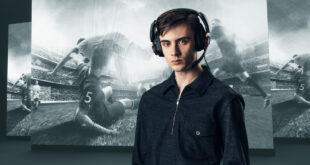John Broomhall, Game Music Connect co-founder, audio specialist and composer:
- Involve audio early in your project. It really can provide massive ‘bang for buck’ in enhancing the overall gaming experience and perceived quality of your title – but audio creatives can contribute best when they’re in at the top collaborating and sparking off inspiration within the team.
Ed Walker, sound engineer and director, Sounding Sweet:
- Audiovisual synchronisation is sometimes overlooked. Most DAWs (Digital Audio Workstations) are capable of setting a ‘Video Sync Offset’ to ensure that video playback is synchronised with the audio. Save time and money by making sure this is calibrated correctly before starting any ADR, Foley or cutscene sound work.
Francesco Libralon, co-founder, composer and audio director, 93 Steps:
- When I choose the genre and the style of soundtracks and sound effects, I pay attention to frequencies – they don’t have to fight one another. Limiting the number of identical sound effects can be useful, too; more identical sound effects at the same time give more volume to the corresponding frequencies.
Christopher Randle, freelance sound designer:
- The perceived width of a sound diminishes as the source gets further away. Adding a rolloff to the spread parameter in Unity’s 3D sound settings can imitate this with stereo audio. This is especially useful for large objects and sounds that contain a lot of spatial information, like gunshots.
Haydn Payne, sound designer, Creative Assembly:
- My method for recording thick gloopy lava bubbling sounds without visiting a volcano is to make a really large batch of porridge or wallpaper paste in a plastic container, stick a hollow tube into it, and blow through it. Easy, cheap, and safe enough to do in a studio if you’re careful.
Stafford Bawler, freelance audio expert behind Monument Valley:
- A way to make your UI/audio HUD sound effects and music tracks sit neatly in a game mix is by widening their stereo field. This helps them sit in their own audio space, which is especially useful in a busy 3D action game such as a racer.
Peter Hanson, sound designer, Pinewood Studios:
- When I’m in a creative flow, I don’t like to break it to perform rudimentary technical tasks, so I do most of this before I start: plug in your outboard, power up synths, spin up hard drives, label your i/os, name your busses, insert some generic returns you can send to quickly, and so on. Make your working environment as quick and easy as possible.
- If a brief seems overwhelmingly complicated, try to break it down into layers in your head. Add the layers you can and listen to what’s missing, the solution often presents itself.
- Don’t smash it with an L1 to make it full scale. Film, TV and games all have some kind of loudness standard – ask yourself if it needs to be this loud. Don’t get me wrong, I love an L1 but be aware of robbing yourself of transients and dynamics.
- Get as many libraries as you can but remember most people already have them. If you want unique sounds, go record them.
- Don’t be afraid to start over. If you haven’t gotten anywhere with an idea after 30 minutes, ditch it!

 MCV/DEVELOP News, events, research and jobs from the games industry
MCV/DEVELOP News, events, research and jobs from the games industry


